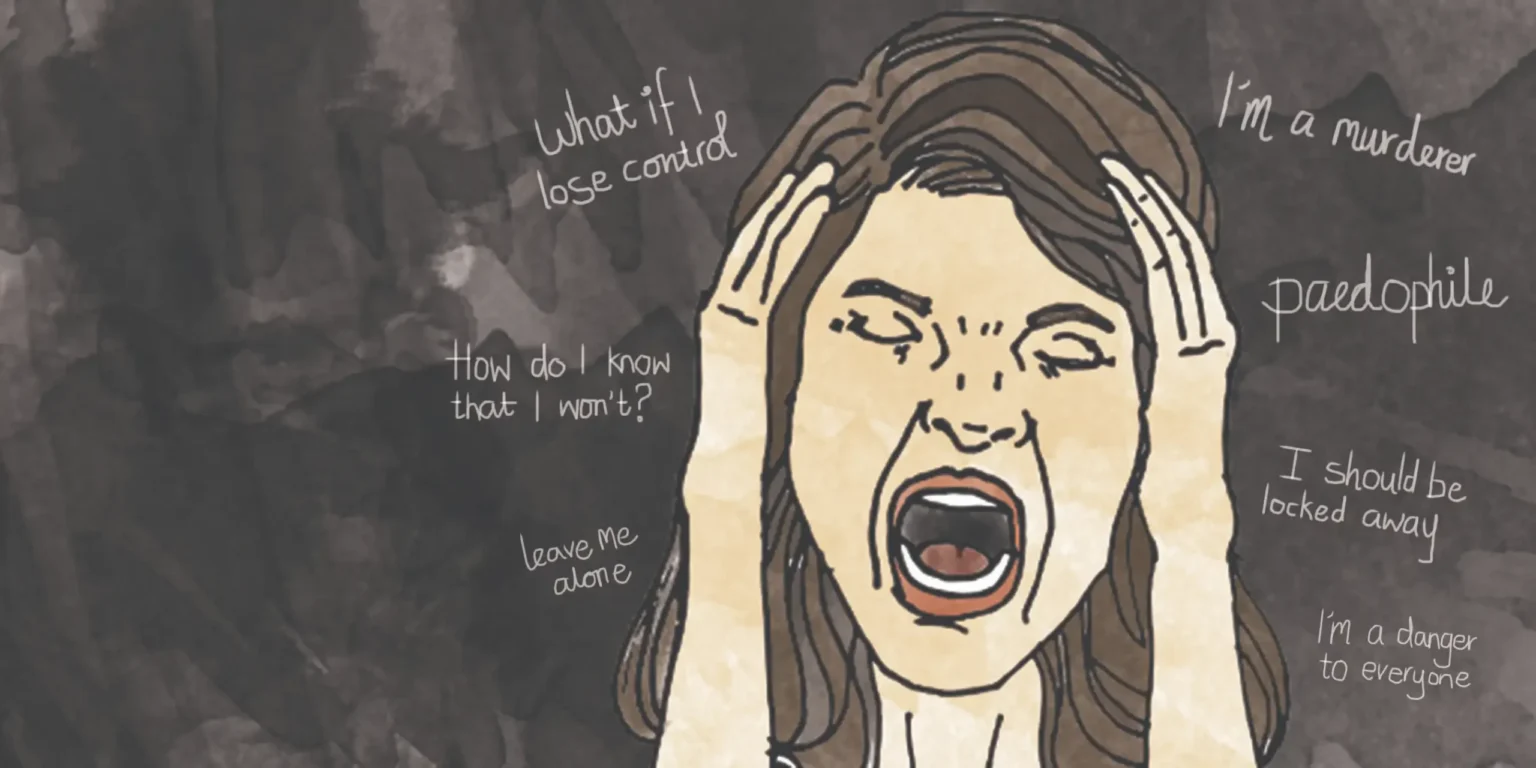Understanding “what is the difference between intrusive and impulsive thoughts” can put our perceptions in context. However, in the past few years, the representation of mental health on social media has blurred the lines between accurate information and popular trends. Frequently, symptoms and diagnoses are diluted, becoming the latest ‘quirks.’ A prime illustration of this is the tendency to label every spontaneous action as a byproduct of intrusive thoughts.
What is the Difference between Intrusive and Impulsive Thoughts?
First, we should clarify and differentiate between each one of them.
Understanding Intrusive Thoughts
For many, the concept of an intrusive thought might be ambiguous. People with intrusive thoughts seldom share these experiences openly, giving rise to a mystery around the subject. Although everyone occasionally has an intrusive thought, they’re more common among individuals with OCD or anxiety disorders.
So, what is an intrusive thought? It’s an unwelcome, distressing, sometimes irrational perception. Intrusive thoughts vary from person to person, however, the most frequent ones revolve around offensive, sexual, or even violent themes. You may visualize causing harm to yourself or others (known as “harm OCD”), perceive a single sneeze as a sign of sickness (“contamination OCD”), or entertain unethical or offensive ideas (“scrupulosity”).
The Challenge with Intrusive Thoughts
The problem is that people harboring these thoughts usually vehemently disagree with them, which is precisely why these thoughts are termed ‘intrusive.’ Such thoughts sometimes lead to self-repulsion, potentially ruining someone’s day or joy in an activity. Intrusive thoughts are not amusing, adorable, or eccentric. They prove to be troublesome and distressing for those afflicted by them.
Impulsive Thoughts
Impulsive thoughts are what most of us witness on social media. These thoughts capture spontaneous moments, like a late-night hair dye experiment, a sudden decision to cut bangs or a whimsical rearrangement of a room. These urges, as the name suggests, are impulsive.
While they might entail a violent or sexual deviation on occasion, they’re not typically acted upon. The main characteristic distinguishing “what is the difference between intrusive and impulsive thoughts” lies in the reaction. With impulsive thoughts, you contemplate momentarily, and then move on without it leaving a significant impact.
Contrary to intrusive thoughts, impulsive thoughts are not as disconcerting or vivid. A crucial distinction is that impulsive thoughts are more associated with ADHD or impulsivity disorders, rather than OCD.
Delineating Impulsive and Intrusive Thoughts

Understanding “what is the difference between intrusive and impulsive thoughts” can help individuals manage distress caused by these thought types. Both impulsive and intrusive thoughts wield the potential to disrupt individual equilibrium, but they impact differently.
Impulsive thoughts correspond to instantaneous, unforeseen thoughts that surface in reaction to a specific stimulus or precipitant. These thoughts might instigate impulsive actions that don’t align with a person’s principles or objectives. For instance, an impulsive buying decision triggered by a sale, regardless of affordability, exemplifies an impulsive thought.
In contrast, intrusive thoughts comprise persistent, unwelcome thoughts that are usually disconcerting and hard to suppress. They can appear unexpectedly, instigating substantial distress, anxiety, and even self-reproach. While commonly experiencing “what is the difference between intrusive and impulsive thoughts” is normal, they can escalate into issues if they obstruct daily functionality or elicit extreme discomfort.
Deciphering Impulsive and Intrusive Thoughts
To get more understanding to decode “What is the difference between intrusive and impulsive thoughts?”, we need to know about the effective ways to support a friend with OCD.
Triggers and Origins
Impulsive thoughts typically arise in response to strong emotions or desires, provoking impetuous behavior or decision-making. For instance, seeing a cake while hungry might incite the impulse to consume it immediately, without considering any potential repercussions.
On the flip side, intrusive thoughts, undesirable and often distressing, invade the mind sans a clear trigger. These thoughts, which can instigate anxiety or distress, are repetitive and challenging to discard. They may manifest as obsessive concerns about safety or cleanliness, or as disturbing mental images related to violence or harm. Substitute a specific stimulus with an abstract origin, and impulsive thoughts transform into intrusive thoughts with recurring, distressing energy.
Duration
When considering the length, impulsive thoughts usually have a short lifespan and are fleeting. They swirl in and out swiftly, rarely lingering in your consciousness. In contrast, intrusive thoughts demonstrate resilience and repetitiveness. They can reoccur incessantly over extended periods, sometimes even years.
Frequency
In terms of occurrence, impulsive thoughts aren’t as frequent as intrusive thoughts. Since the former are often kindled by a definite event or situation, they lack the arbitrary and sudden emergence that characterizes intrusive thoughts.
Scope of Control
Impulsive thoughts are spontaneous notions that surface abruptly, making the individuals experiencing them feel like they’re not at the helm of their thoughts. However, with continuous effort and practice, one can begin to regulate these thoughts.
Conversely, intrusive thoughts are undesirable ideations that continue to haunt an individual despite their best efforts to eliminate them. These thoughts can be frightful, disturbing, or unwanted, often leading to feelings of guilt or shame. Consequently, it’s crucial to recognize that intrusive thoughts don’t represent one’s character or morality. With therapeutic interventions and support, one can learn to manage these thoughts, thereby minimizing their impact on daily life.
Responding to Intrusive and Impulsive Thoughts
A guide to identify what is the difference between intrusive and impulsive thoughts and how to respond.
Embrace and Recognize
The initial step, regardless of whether the thoughts are impulsive or intrusive, is acknowledging their existence devoid of judgment. Understanding “what is the difference between intrusive and impulsive thoughts” along with absorbing that thoughts are a standard operation of the mind and do not constitute your character, is crucial.
Adopt Mindfulness
Engage in exercises that center around mindfulness, offering you the tools to witness your thoughts objectively, without forming a connection. This technique enables spontaneous arrival and departure of the thoughts, without dwelling on them or granting them undue significance.
Challenge Disparaging Beliefs
In circumstances where intrusive thoughts incite self-criticism or guilt, confront these beliefs. Reinforce to yourself that thoughts don’t always mirror reality, and they aren’t the sum total of your identity.
Foster Impulse Control
In relation to impulsive thoughts, practice restraint before succumbing to the thought-driven action. Probe if the potential action is congruent with your objectives and principles. This brief moment of introspection can curb impetuous decision-making.
Pursue Professional Assistance
If any form of thought begins to inundate you and interfere with your routine, contemplating guidance from a mental health professional might serve you well. Therapy can bestow you with practical strategies to manage these thoughts and enhance your general well-being.
To Conclude What is the Difference between Intrusive and Impulsive Thoughts?
Grasping “What is the difference between intrusive and impulsive thoughts?” equips individuals to traverse the labyrinth of their minds more proficiently. Recognizing that both types of thoughts constitute an inevitable part of the human mental experience can mitigate associated anxiety. By incorporating mindfulness, impulse control tactics, and resorting to professional assistance when necessary, one can assimilate to manage these thoughts and formulate decisions that correspond with their authentic self. Always bear in mind that calling for help embodies strength, and prioritizing mental health is of supreme importance.
Read more: Blocked nose panic attack













